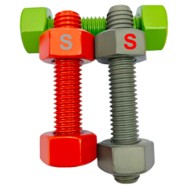
Interpreting fashion scales sometimes resembles solving a hidden riddle
- Acknowledging your physique measurements initiates accurate choices
- Collect correct chest, waist and hip data to confirm fit
- Study the supplier's measurement guide for precision
Steer clear of relying just on marked sizes which may confuse Rather, measure yourself and verify with the size map. Defining your aesthetic is an evolving series of trials.
Understanding the enigma of measurement guides
Garment sizing bewilderment is a frequent global issue. Converting measurement systems sometimes tests patience, as retailers adopt differing measurement conventions. Still, simple knowledge and tools let you overcome sizing puzzles.
- Initially, note the measurement conventions used by makers. Typical systems are US, UK, European and several Asian variants.
- Following that, check bust, waist, hip and inseam entries carefully. Verify that the brand measurements align with your measurements.
- Ultimately, consult the brand guide for recommended adjustments. Brand guides typically present recommendations, notes and tips.
Pinpointing perfect sizing during purchase
The realm of clothing sizes commonly creates confusion. Label names vary and medium may translate to small across makers. Variability reflects the individual measurement rules of each company. So begin by measuring yourself with care. Use a fabric tape to record bust, waist and hip measurements. Shun exclusive dependence on a habitual size label. Sizes may change even inside the same brand depending on style. Arriving at your ideal fit may involve sampling various sizes.

Picking standard sizes or bespoke measurements
For products such as furniture you face a standard or custom choice. Each selection offers distinct perks and potential downsides. Standard offers convenience and usually lower expense. Custom solutions match specific design or space-related requirements
- Consider requirements and cost when selecting size approach
- Document exact spatial or bodily dimensions for reference
- Survey suppliers and their specs to choose wisely
In conclusion the best fit choice corresponds to your needs.
Solving the puzzle of size translation across regions
Moving between global size conventions can present tangled routes. Luckily, charts and calculators simplify cross-system translation. Initiate learning about prevalent garment and shoe sizing conventions. Employ conversion guides to compare across size schemes. Bear in mind that body shape and silhouette influence ideal choice. Check reviews and fit reports to confirm expected sizing.
An easy path to decoding garment sizes
Dealing with apparel charts commonly confuses people. Designers commonly adopt independent measurement schemes, yet this resource aims to simplify the process with clear steps.
- Primary action: take accurate measurements with a fabric tape
- Thereafter, confirm your dimensions with the provided size map
- Mind your silhouette because it changes fit expectations
Ultimately testing actual garments remains the most reliable way to confirm fit.
A full guide to standard male and female measurement sets
Shopping without trying on increases sizing ambiguity for buyers. Accordingly, use this guide to understand men's and women's sizing norms. For jeans, tops or dresses these notes aid in determining correct size.
- As a first step, accept that sizes change across makers and locales
- Next, obtain waist, hip, bust and torso measurements accurately
- At last, opt for the larger option if measurements fall in-between
By following these tips you can approach size charts with confidence. Enjoy your shopping experience!

Helping parents understand children's size charts
Selecting proper kids' clothing sizes can be a struggle. Children's quick growth cycles mean constant size updates. Depend on the producer's chart rather than age indications. Get the child's chest, waist and height figures for accuracyAccurate bust, waist and hip measuring techniques
Ensuring garments fit well begins with correct body stats. Use a soft measuring tape and a helper for best accuracy. Stand straight with feet shoulder-width apart and relax shoulders
Exploring what XS to XXL truly mean across brands
Contemporary size systems can be confusing and inconsistent. Inter-brand differences often prevent uniform sizing standards. Reviewing detailed size ranges makes decoding simpler. Let's explore what the letters and numbers mean in practice!
Uplifting diverse body shapes

Celebrating varied body shapes fosters broader acceptance. It means moving beyond messages that enforce a single 'right' size. We should nurture communities that support body confidence for all.
- Prefer actions that cultivate self-acceptance and respect Prefer actions that cultivate self-acceptance and respect Decide each day to celebrate body kindness and positive views Decide each day Standard Size to celebrate body kindness and positive views
- Keep remembering that beauty is not limited to one size
- Resist advertising and messaging that narrow appearance ideals
- Adopt routines that strengthen body confidence and care
